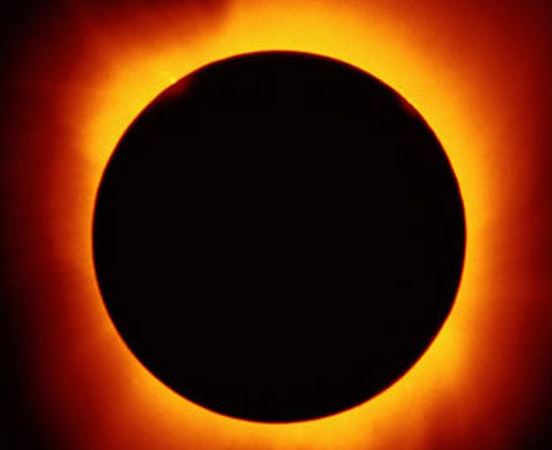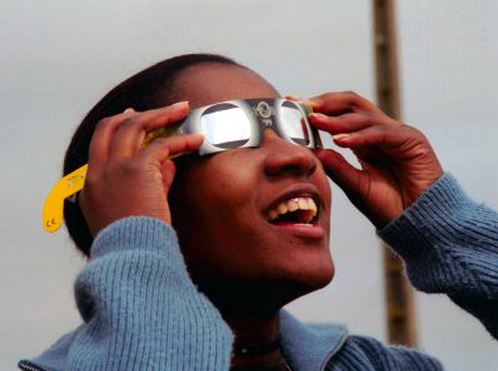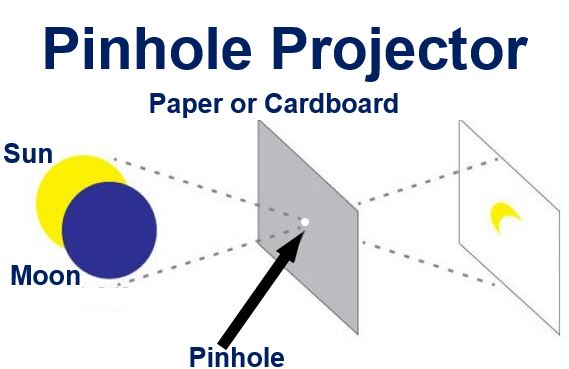The UK will see a solar eclipse with obscuration (darkness) ranging from 97% in the north to 85% in the south. The Moon will cast its shadow over most of Europe, northern Asia, and northern and western Africa, with the Faroe Islands having a total blackout.
An eclipse of the Sun, or solar eclipse, occurs when the Moon moves in between the Sun and the Earth, thus blocking out the sunlight. The Moon casts two shadows on Earth’s surface when this happens – the small umbra (total darkness), and the larger penumbra (partial darkness).
The British Astronomical Association said in a statement:
“An obvious partial eclipse will be visible from every country in Europe and the partial phase will also be seen from places as widely spread as Newfoundland, North Africa and north-western Asia.”

A total eclipse will be seen on March 20th in the Faroe Islands.
The eclipse starts at 07:41 GMT and ends at 11:50 GMT.
Amateur astronomers are urging Brits to make the best of this eclipse, because there won’t be another one for 11 years (August 11th, 2026).
The Met Office says the longest duration of the total eclipse will be 2 minutes and 24 seconds, which can be viewed off the coast of the Faroe Islands.
The deepest partial eclipse in the UK will be on the west coast of the Isle of Lewis, the largest island of the Western Isles (Outer Hebrides) of Scotland, where at 9:36 am, 98% of the sun will be obscured.
In the evening before the eclipse there will be a Supermoon, i.e. the Moon and Earth will be as near to each other as they can be. This means that in this 2015 Spring Equinox there will be a Supermoon Eclipse, i.e. a Supermoon equinox and eclipse both falling on the same day.
Protecting your eyes during an eclipse
You should never look directly at the sun without proper filters, even during a partial eclipse. There is a serious risk of damaging your eyes.
US space agency NASA has the following advice:
“The Sun can be viewed safely with the naked eye only during the few brief seconds or minutes of a total solar eclipse. Partial eclipses, annular eclipses, and the partial phases of total eclipses are never safe to watch without taking special precautions.”
“Even when 99% of the Sun’s surface is obscured during the partial phases of a total eclipse, the remaining photospheric crescent is intensely bright and cannot be viewed safely without eye protection.”

You can buy special filters to view the eclipse safely. (Image: European Space Agency)
If you want to view the Sun safely during an eclipse you can either use a special filter, or a pinhole camera (pinhole projector), which projects the image onto a screen.
The British Astronomical Association’s Solar Eclipse Safety code page says:
“DON’T view the Sun through sunglasses of any type (single or multiple pairs), or filters made of black & white or colour photographic film, or any combination of photographic filters, crossed polarisers or gelatin filters, CDs, CD-ROMs, or smoked glass. These are NOT safe.”
“DO view the Sun ONLY through special filters made for safe solar viewing, e.g. aluminised mylar filters, or black polymer filters, identified as suitable for direct viewing of the Sun, bearing the CE mark AND a statement that it conforms to European Community Directive 89/686/EEC, or use a welder’s glass rated at No. 14 or higher. Always read and follow the manufacturer’s instructions carefully.”
If you have (or are in charge of) children, do not let them view the solar eclipse unsupervised.
Make your own pinhole camera
A pinhole camera (pinhole projector) projects an inverted image of the Sun with the Moon blocking part of it onto a screen. To make your own, which is cheap and easy, you need:
– two sheets of normal printing paper (white cardboard is also possible).
– a pin (or thumbtack).

Pinhole cameras are easy to make, and super cheap.
Make a small hole in the middle of one of the sheets of paper. Check the hole carefully, making sure it is round and smooth.
With your back to the Sun, to protect your eyes, hold the sheet with the hole up to the Sun. Hold the second sheet about one or two feet away and move it around until you see the inverted image of the Sun on it.
Solar power producers concerned about electricity supply
Europe’s solar power industry is concerned about how it will manage when an estimated 35,000 MW of power disappears from the system, and then comes surging back a couple of hours later.
According to ENTSOE (European Network of Transmission System Operators for Electricity), due to the amount of solar energy involved, it has been necessary to evaluate and minimize the risk, to make sure the continent has at least a level equal to that of a standard operating day.
Losing 35,000 MW of electricity during the daytime is the equivalent of what nearly eighty medium-sized conventional generating units can produce.
When everything goes dark on Friday morning on March 20th, demand for electricity will surge as hundreds of millions of Europeans switch their lights on at home and in the workplace.
ENTSOE wrote on its website:
“Managing this event on the world’s largest interconnected grid is an unprecedented challenge for European TSOs.”
“Solar eclipses have happened before but with the increase of installed photovoltaic energy generation, the risk of an incident could be serious without appropriate countermeasures, as was pointed out in ENTSOE’s Winter Outlook Report of last December.”
In 2012, about 10.3% (3% of the total) of renewable electricity generation in Europe came from solar power, compared to just 0.1% in 1999.
